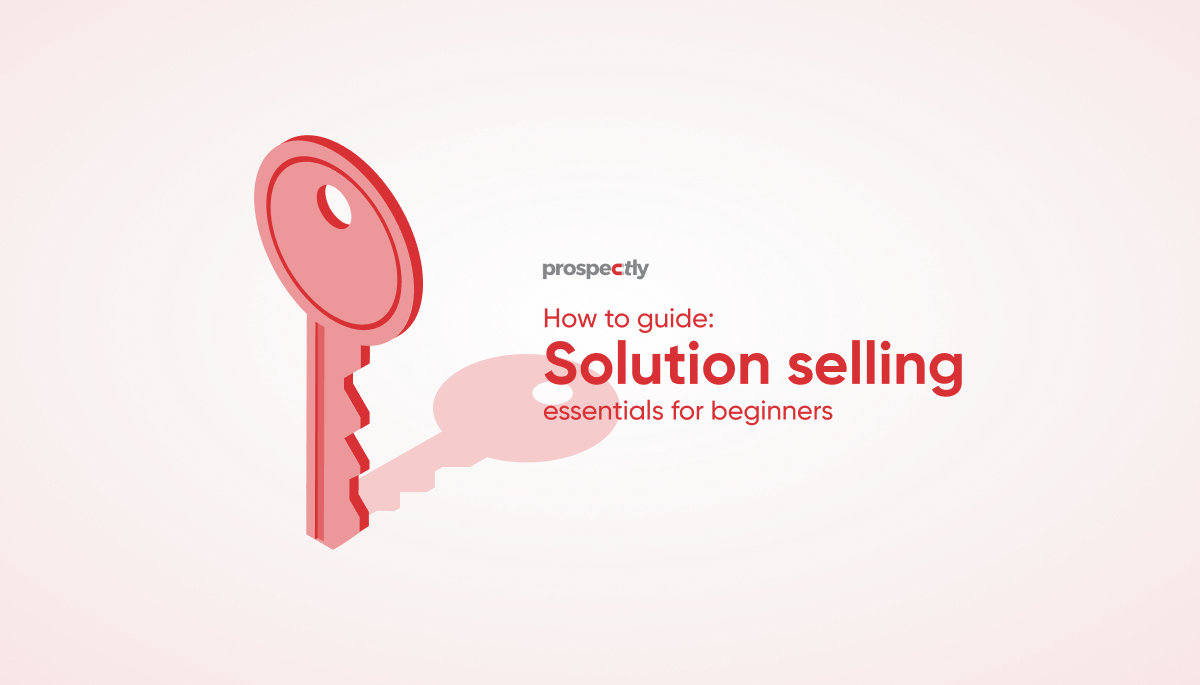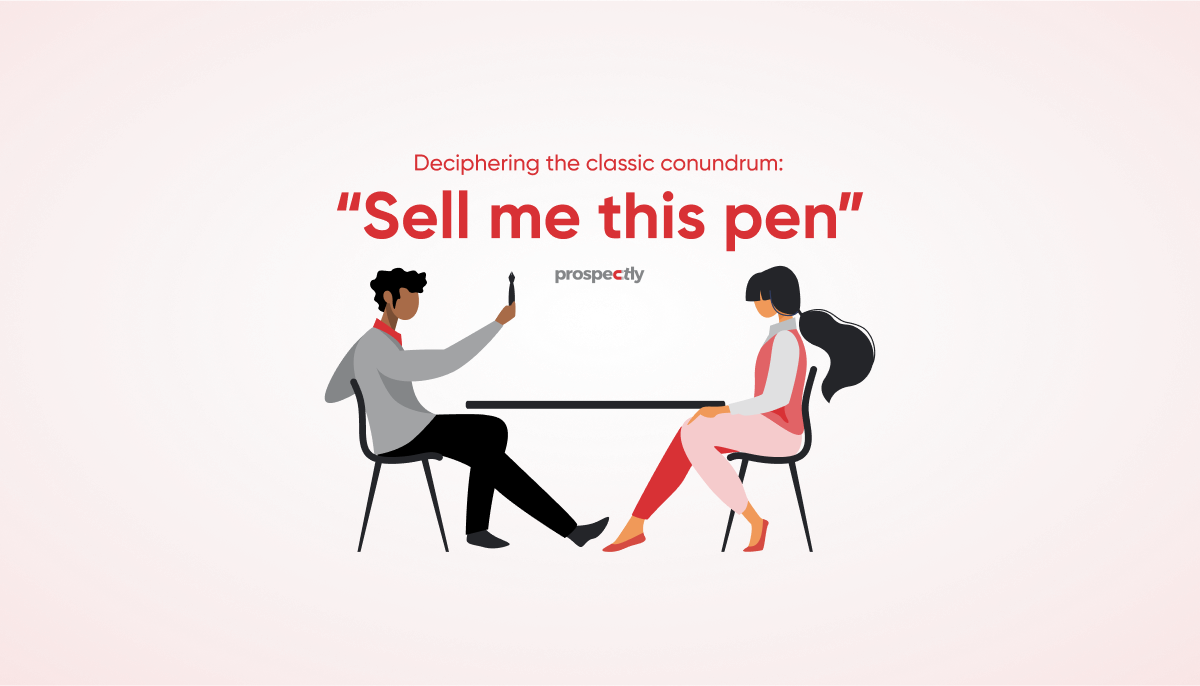11 guiding principles to a bulletproof sales negotiation strategy
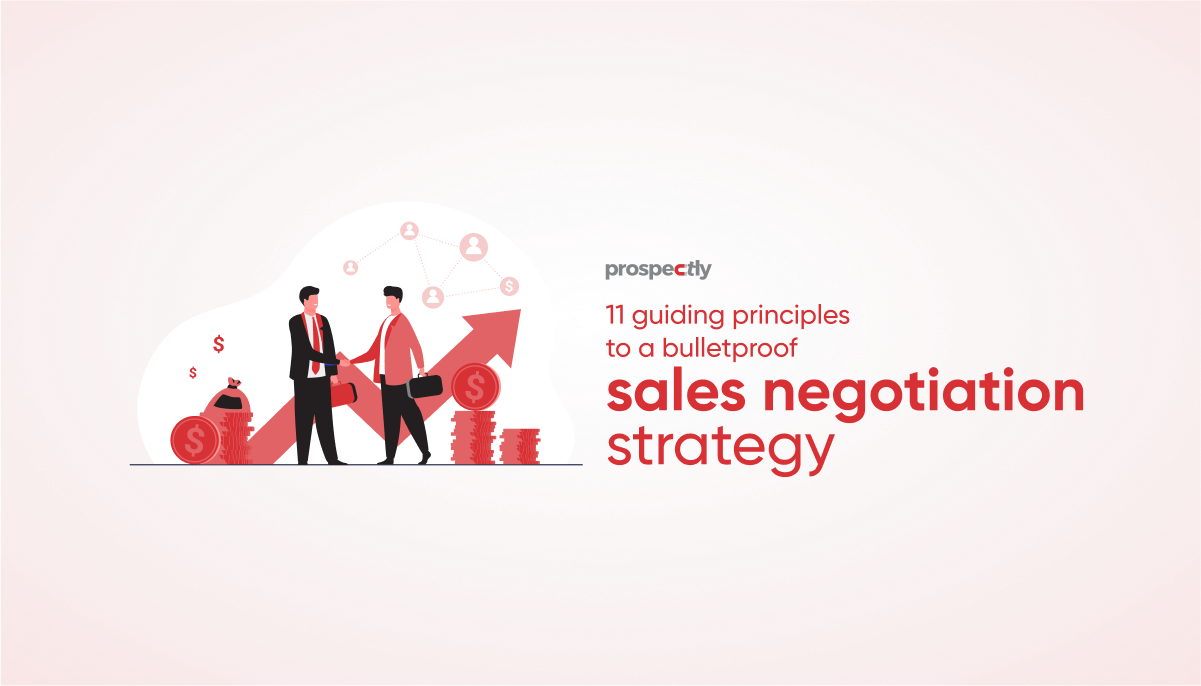
In sales, the ability to negotiate is sacrosanct, irrespective of your product knowledge or KPIs. No matter how smooth your preliminary client communications, your attitude during the negotiation stage might make or break a deal. Moreover, almost every step of the sales cycle requires strong negotiating capabilities. This blog will explore critical sales negotiation principles to increase your probability of closing maximum deals.
But first, let’s define sales negotiation.
What is sales negotiation?
According to Rain Group, sales negotiation is the process where two parties work together to achieve the best possible agreement. Note how this definition emphasizes on ‘achieving’ the desired result rather than ‘reaching an agreement’.
If you go into a negotiation with the mindset of reaching an agreement, it might compel you to make an agreement that is only profitable to the seller. However, it is easier to achieve a mutually beneficial outcome when you negotiate intending to work together.
This brings us to the two principal styles of sales negotiation-
- Consultative or Collaborative negotiation
- Adversarial or Competitive negotiation
What is the difference between consultative and adversarial negotiation?
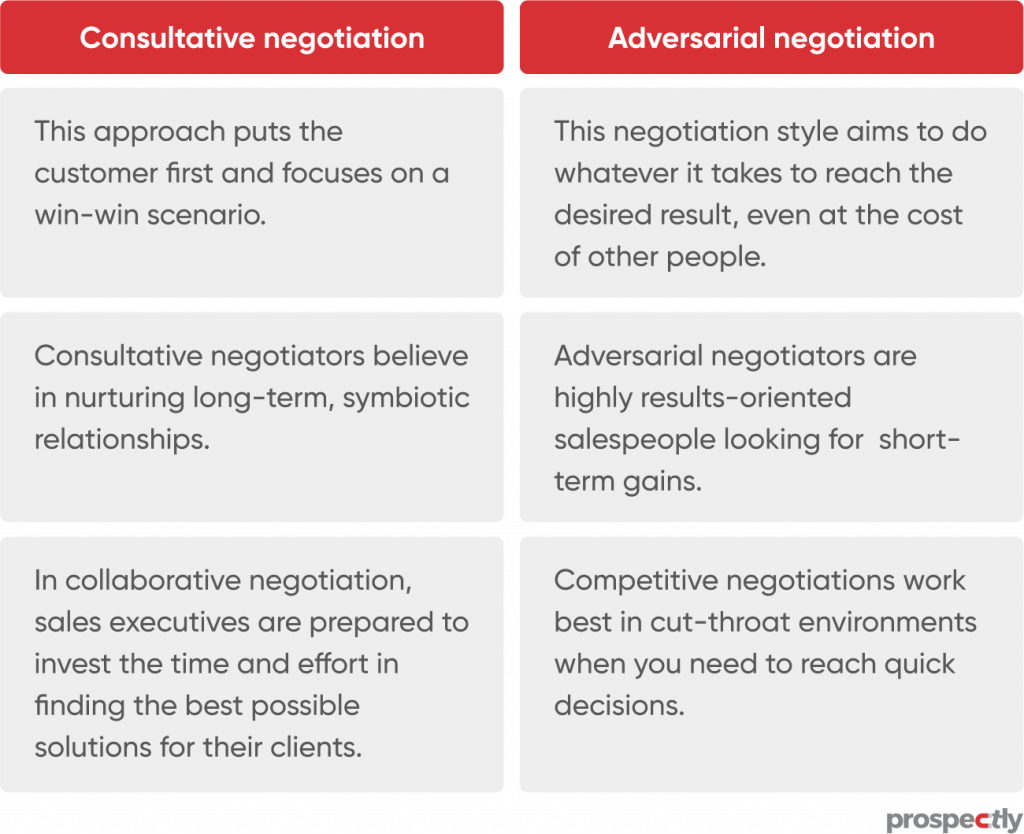
Consultative negotiation is often the preferred negotiation style as it helps you discover the customer’s sore spots and address their core concerns. But, being consultative does not imply renouncing your price margins or undermining your time as a seller. On the contrary, it allows you to read your customer’s pulse and propose a favorable solution.
Why is negotiation important in sales?
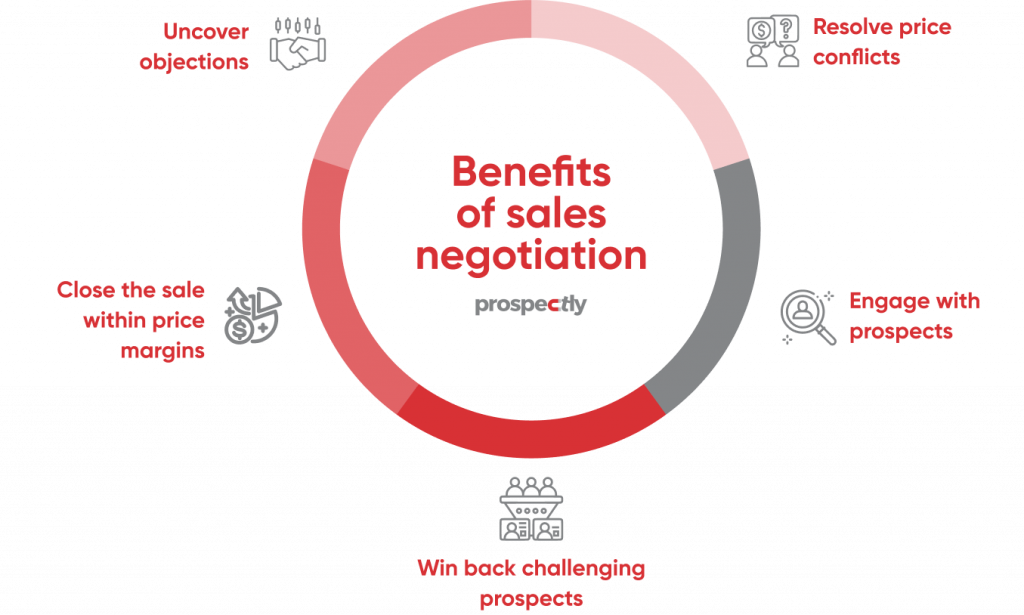
As identified in RAIN Group’s Top Performance in Sales Negotiation Research Report, salespeople who master negotiations are 12.5x happier with the negotiation outcome and also 3.1x more likely to hit their pricing targets. Below are a few key benefits of cultivating sales negotiation tactics.
- Expert negotiators can figure out the root cause of client objections which translates into more sales.
- Helps resolve price conflicts and develop customized pricing strategies for your prospects.
- Sales negotiation allows you to engage with prospects and build trust for long-term business relationships.
- Prospects unhappy with the terms of the sale like cost, service warranty, etc. can often back out from the deal. Learning to negotiate enables you to offer substitute options suitable to both parties.
- Helps you close the sale without compromising on target pricing.
Now that you understand the benefits of sales negotiation, we will illustrate how to negotiate as a seller.
11 sales negotiation principles to improve your win rate
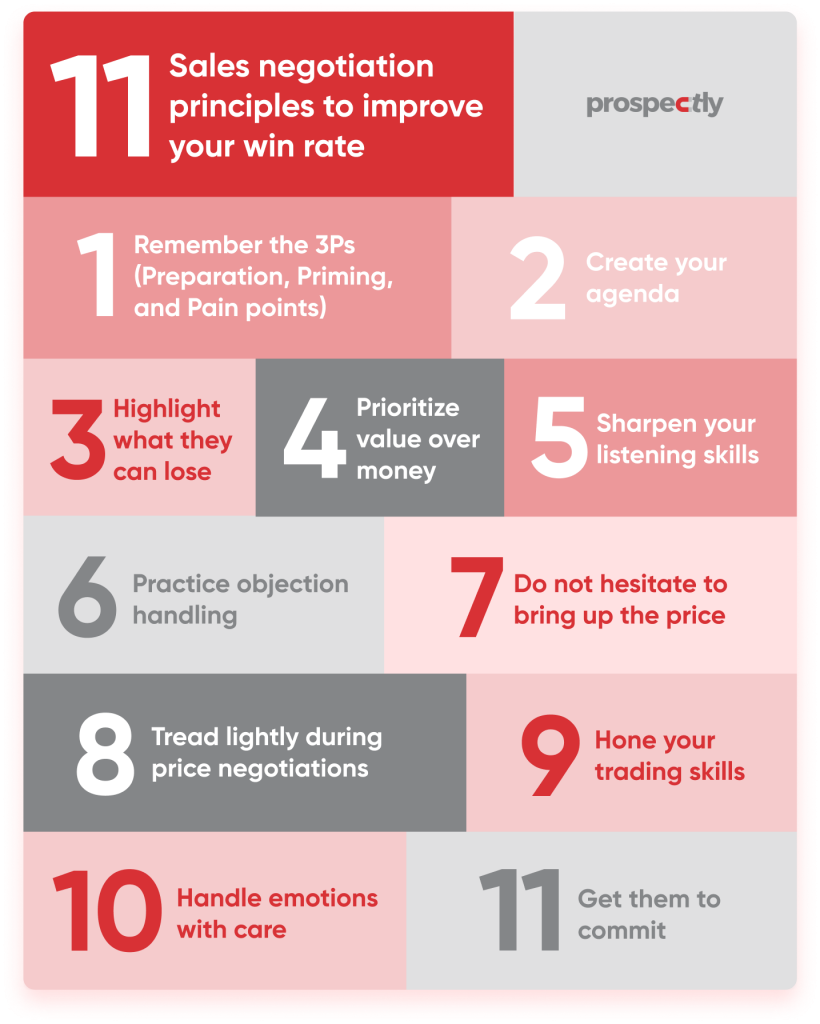
1. Remember the 3Ps (Preparation, Priming, and Pain points)
Preparation
In sales negotiations, preparation gives you leverage as a seller and also calms your nerves before getting into a negotiation meeting. Try to ascertain the following metrics to improve your odds of closing the deal.
- Why does your buyer need your offering?
- What does the prospect miss out on if they don’t buy from you?
- Are you speaking with the decision-maker? Or does the person you are negotiating with have any buying power?
- What is their buying timeline?
- What is their budget?
Priming
Right from your initial sales conversation, concentrate on building trust to influence your prospect’s decision. Approach them with a problem-solving mindset rather than a solution provider. This will develop a comfort level between you and your buyer, which will help them see your point while negotiating.
Pain points
It does not suffice to be aware of your customer’s pain points. Make sure you bring it up during sales conversations and highlight how you can address their concerns. Prospects aware of their business needs are less likely to push back during sales negotiations.
2. Create your agenda
Setting up the meeting agenda is key to running a seamless sales negotiation meeting. When you draft the schedule, it gives you the control to navigate the meeting. Start by doing a quick recap of the background to revisit your discussions. Then get to the objectives. This will direct the buyer’s attention to the end goal of addressing their pain points.
Take a look at the below agenda template that can be customized based on your requirements.
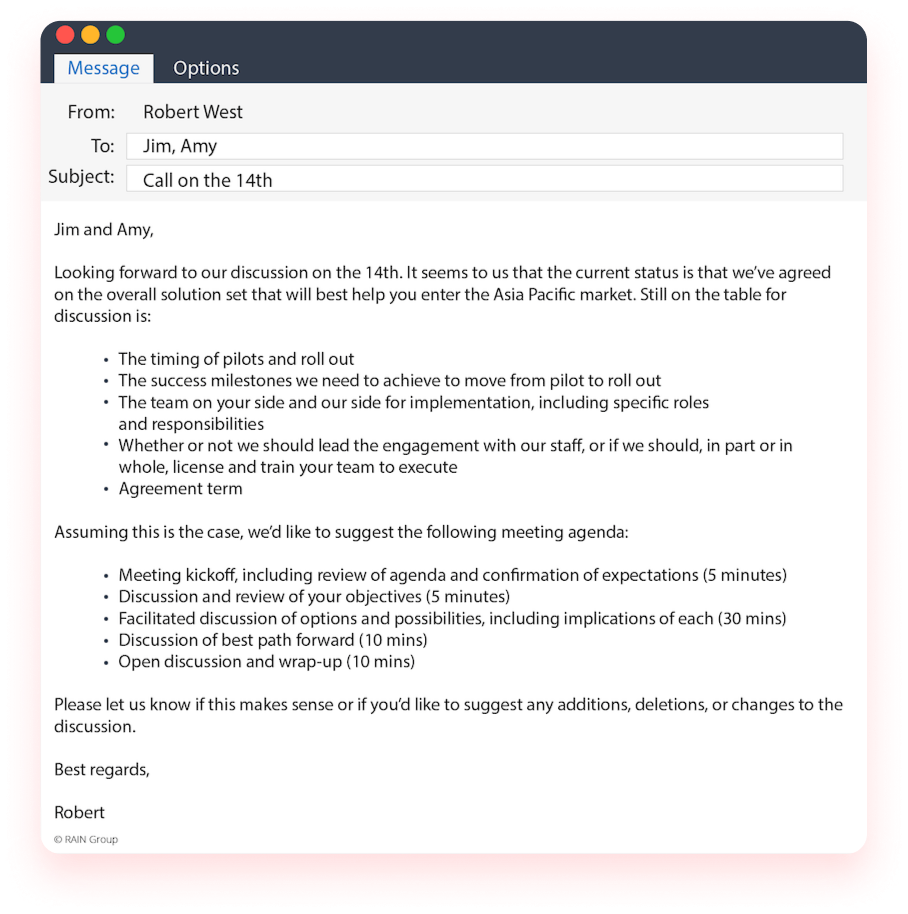
3. Highlight what they can lose
People are psychologically more inspired to avoid losses than to achieve gains. As a result, demonstrating what your buyer can lose in a negotiation is more likely to get you a sale.
A social experiment conducted at the University of Santa Cruz proves this theory.
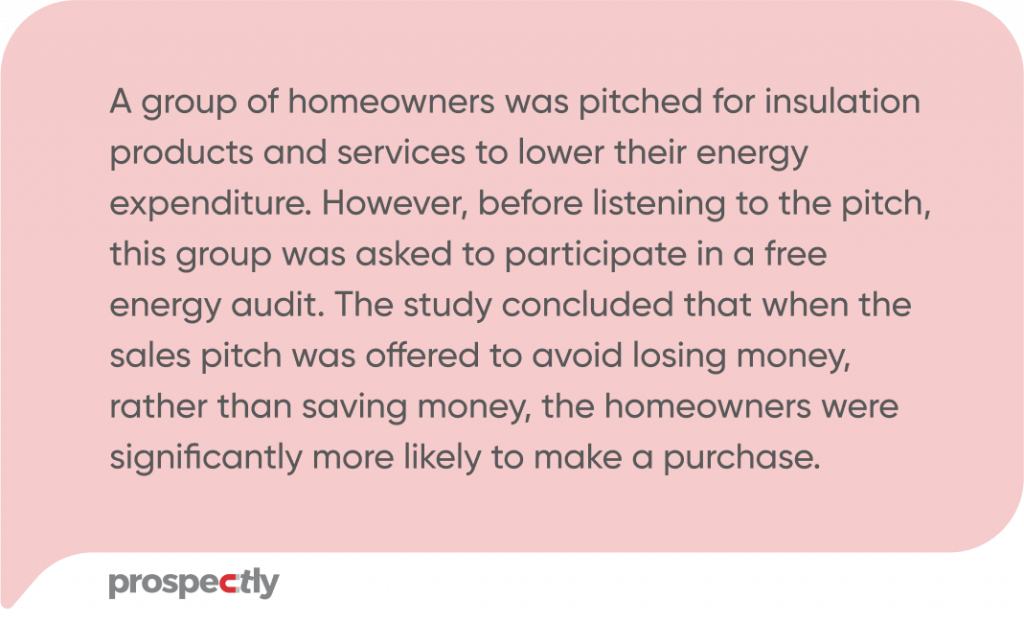
4. Prioritize value over money
While you must not shy away from talking about money, it is also important to underline the value you offer. Help your customer understand how your product is more advantageous to them than your competitors. Once they realize its true worth, they are less likely to seek higher concessions.
Take a look at this example of a 3-deep questioning strategy that you can use to quantify your product’s value during the sales negotiation.
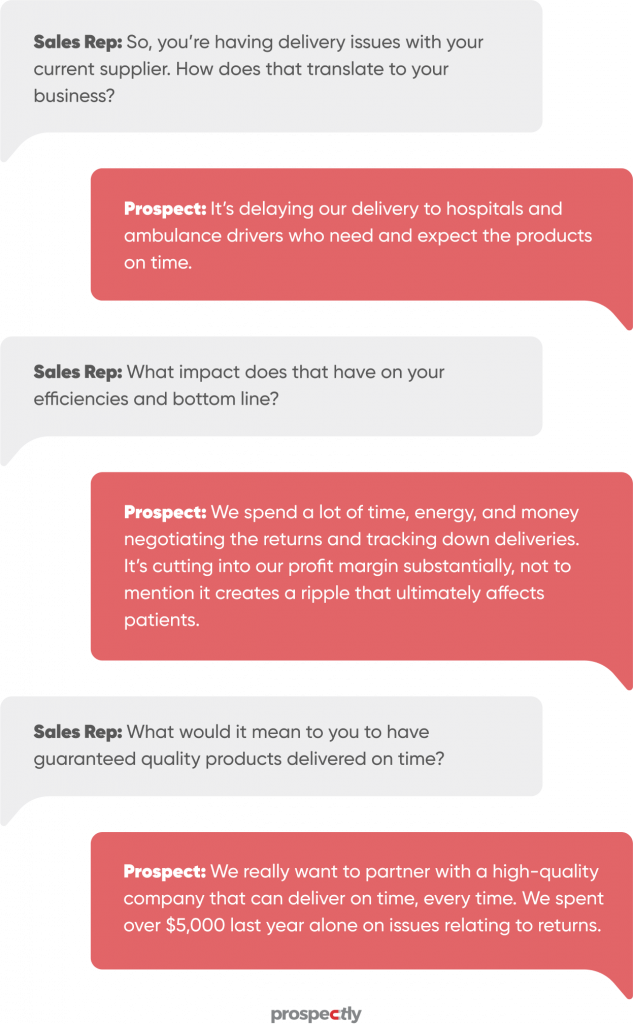
5. Sharpen your listening skills
Before you try to resolve your customer’s apprehensions with discounts, listen intently to understand what they actually want. Use probing questions to uncover the underlying issue. When a prospect raises pricing issues, they may be actually looking to mitigate risks by procuring a cheaper product.
Use the following questions to get to the bottom of their concern.
- Why do you think that is?
- Tell me how I can make this worth your time and investment?
- Can we offer any specific value add that might change your mind?
- Why do you think our product is expensive?
- Explain to me what exactly you are looking for.
6. Practice objection handling
Your ability to handle objections will help you navigate negotiations better. Objection handling requires strong product knowledge and the ability to think on your feet. Here are a few points to consider during objection handling.
- Control the urge to react instantly and defend your position. Give them a chance to voice their opinion.
- Let them know that their feedback is essential to you.
- Once they have shared their objection, respond in order of priority.
- Share success stories of how you helped your existing customers with similar objections.
For a detailed guide on tackling sales objections like a pro, refer to our blog 22 Most daunting sales objections and how to overcome them.
7. Do not hesitate to bring up the price
A RAIN Group study indicates that sellers willing to make the opening offer are more likely to be satisfied with the end result of sales negotiations. Instead of waiting for the buyer to make the first move, be prepared to share the pricing parameters proactively.
A study conducted by Gong analyzed 11,331 opportunities where negotiators brought up pricing on the first call within the initial 38-48 min time frame. The results indicated a 10% increase in win rate. However, irrespective of whether the buyer introduced the budgetary issues or the seller, the win rate remained the same.
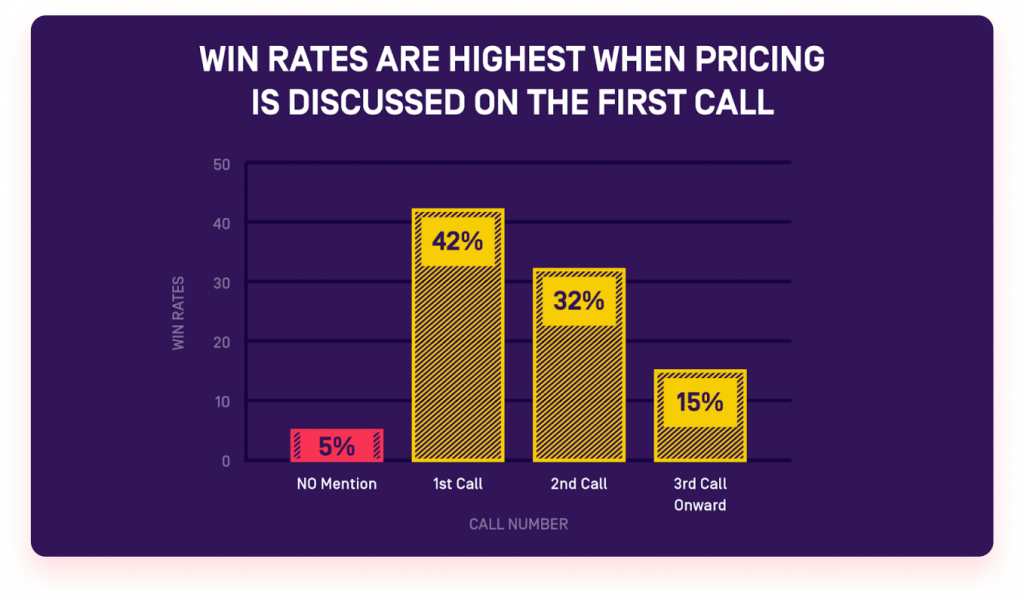
The main takeaway here is if the buyer does not ask for the price within the first 38 minutes of the call, bring it up. Waiting too late will only delay your chances of locking the deal.
8. Tread lightly during price negotiations
Before rushing into price negotiations, review the following parameters.
- Do not be quick to offer discounts. Your prospect may assume that you undervalue your product.
- When deciding on concession amount, use independent sources like an industry benchmarking report or third-party research. This will demonstrate an unbiased negotiation technique.
- Research indicates that when gaining money, people prefer installments, but they would rather lose money in one go. Dividing discounts into multiple smaller amounts gives you a higher possibility of winning the deal.
- Know that you have alternatives, and be ready to forsake the deal. Be aware of your BATNA (Best Alternative To a Negotiated Agreement). If you lose out on your margins by winning the deal, know when to walk away.
9. Hone your trading skills
Before jumping straight into discounts, review your alternatives. This will help you attain your pricing target in exchange for products/services which are not very essential or easily doable.
- Be prepared with your trading list and assign value to each tradeable item.
- Before suggesting trading options, run through the buyer’s objectives and get their opinion to ensure the trade adds value to their business needs.
- Do not hesitate to use your creativity and use bundles for every trade. This implies changing the whole option for each trade instead of a single component.
- Do not rush into offering multiple trades. This will give the impression that your traded offer does not have much value.
10. Handle emotions with care
Sales negotiations are often emotionally sensitive. It takes patience and practice to rein in the discussion at the right time, so it does not turn into an argument. Irrespective of the buyer’s emotional state while negotiating, it is vital to keep your composure and make the buyer feel respected and valued. Remember, your ultimate objective is not just to close the deal but also to develop a sustainable relationship.
11. Get them to commit
Once you have achieved a mutually agreeable outcome, get a confirmation. As stated by Robert Cialdini, in his book Influence: The Psychology of Persuasion, an agreement that is confirmed verbally, in writing, and then declared publicly is most likely to be kept than those committed only verbally or verbally and in writing. So get them to confirm verbally on the call, re-confirm it by email and seek a positive written response. Then you can request them to share it internally among the parties involved.
So we have discussed how to negotiate. The following section will expand on what not to do during sales negotiations.
Avoid these sales negotiation mistakes
- Negotiating over email is a big ‘No’. When it comes to sales negotiation, you can lose context over email. Also, it’s easier for the customer to ignore you over email or respond in the negative. Instead, request a quick phone/video call so you can answer any objections instantly and tailor solutions that fit their needs.
- Do not apologize for the pricing, but you can apologize during the price negotiations. Here’s an example.
“I’m sorry. I want to offer you that number – and if it were up to me, I would. But that discount simply isn’t doable.”
What the seller very smartly achieves here is decline the discount without saying ‘No’. Then you can list out the alternatives that you can offer instead of the concession.
- The days of Always. Be. Closing, are in the past. Instead of using manipulation, act as an advisor and lead them towards the close. Even if the buyer highlights objections at the 11th hour, handle it with composure.
Sales negotiation training
High-performing salespeople are 9.3x more likely to receive highly effective sales training than the remaining. Also, 78% of salespeople who took part in sales training tend to be entirely satisfied with the outcome. Hence, sales negotiations should be an integral part of your sales training program. Some of the fundamental sources for honing your sales negotiation skills are
- Online coaching
- Training exercise or negotiation role-play with a buddy or mentor.
- Field practice during real-life customer negotiations.
Winning the sale doesn’t win the negotiation

As a salesperson, you need to understand that being the seller does not take away your leverage or put you at a disadvantage. It is essential to understand that sales negotiations are equally critical to both you and your prospect. Do your research, understand where your prospect is coming from, showcase and realize what you bring to the table, and do not hesitate to bring up the commercials involved while maintaining your composure. Even though it is not possible to plan for every likely negotiation scenario, practicing these cardinal skills will help you stay on top of your game.


